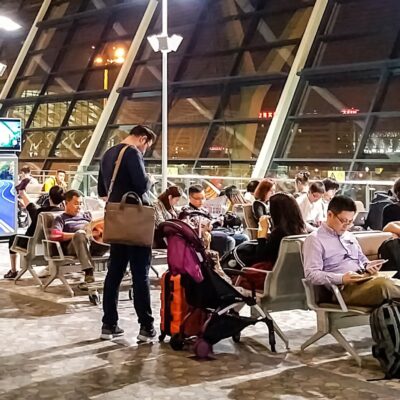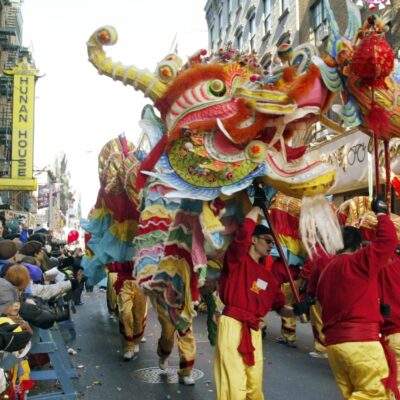中文 (Chinese translation)
The rise of emerging donors, especially China, is transforming the landscape of international aid. There are new geopolitical and economic contests in aid recipient countries as Chinese development cooperation provides an alternative in a domain long dominated by donors such as the United Kingdom, the United States, the European Union and Australia.
While there has been considerable attention on the geopolitical and economic positioning of emerging and Western aid agencies in countries such as Myanmar and Cambodia, much less attention has been given to contests over the meaning and use of key words such as ‘human rights’ in the aid sector. With the rise in influence of Chinese aid, how are the words ‘human rights’ being contested within the arena of international aid? And how do donors seek to persuade actors in recipient countries in Asia to internalise meanings of human rights that match their preferences?
An emerging contest that I explore here, is between one strand of Beijing’s emphasis within the aid sector—the ‘right to development’—and Western donor concerns that this displaces the focus on individual civil and political rights. My argument is that research on the rise of Chinese aid and its influence on the global aid architecture must pay attention not only to geopolitical and economic positioning but also to important emerging contests over the meaning and use of words such as ‘human rights’.
The rising influence of Chinese aid
It is first important to recognise that Chinese aid is not always coordinated in a coherent and centralised manner, but is rather implemented amidst diverse interests from various ministries and levels of government, private sector and non-government organisations. When I refer to Chinese aid and interests here, I do not seek to underplay this considerable diversity of interests.
A common tendency in the analysis of Chinese development cooperation, is a focus on either critique of China’s supposedly self-interested motivations for aid (including the charge that it is ‘imperialist’ or employing ‘rogue aid’) or reactions against this claim. This emphasis on either legitimising or de-legitimising Chinese aid means that recipient countries are often portrayed as simply a backdrop while broader international struggles play out, which in turn underplays the diversity of impacts of Chinese aid.
Also important to note is that practical comparisons between Chinese and Western donor aid are challenging. There is a difference in definition between Chinese foreign aid (duiwai yuanzhu) broadly and the narrower and internationally defined official development assistance (ODA) (fazhan yuanzhu)–which includes criteria such as proportions of loans and grants. With broad use of concessional loans and other financing, significant portions of Chinese aid do not fall within ODA as defined by the Organisation for Economic Co-operation and Development (OECD).
By any measure, however, allocations of international assistance by Beijing have risen significantly in the last decade from an average of $US4 billion per year over 2010-12 to almost $US6 billion in 2019, which is more than Australia’s international development assistance. Along with these increases in financing, two crucial recent shifts have heightened the importance of discursive struggles in international aid forums.
First, in 2018 China formed a new stand-alone aid agency, the China International Development Cooperation Agency (CIDCA). The aid program was previously fragmented, with decision-making competition between the Chinese Ministry of Commerce and the Ministry of Foreign Affairs. CIDCA reduces this fragmentation and has a wider mandate, with CIDCA able to negotiate and sign international agreements for the Chinese government.
Interestingly, the creation of a new stand-alone agency is opposite to the trend in traditional member countries over the last decade. As OECD countries have increasingly looked to national political and trade interests, several donor agencies—including in the United Kingdom, Australia and New Zealand— have been merged into ministries of foreign affairs and trade. In contrast, China’s new stand-alone aid agency, and increasing aid budgets, signal a greater involvement in the sphere of development cooperation.
In contrast to many traditional donor agencies, CIDCA’s stated objectives do not overtly include the promotion of human rights. There is no aversion, however, to the language of ‘human rights’, with CIDCA regularly posting text from high level Chinese official speeches and diplomatic visits—where discussion of human rights has been central—on their website. The references to ‘human rights’ in these postings are varied.
On one hand, they attempt to establish China as a global human rights actor. For example, in February 2022, CIDCA’s website reposted Foreign Minister Wang Yi’s speech on ‘Upholding Equity and Justice to Promote Sound Development of the Global Human Rights Cause’.
On the other hand, they warn against the use of human rights language to justify foreign interference. For example, CIDCA posted an August 2021 speech by Wang Yi which warned against countries seeking ‘their selfish geopolitical agenda under the guise of democracy and human rights’. As a new stand-alone agency, CIDCA demonstrates the Chinese government’s increasing confidence in engaging in global development debates and supporting Beijing’s discourse on ‘human rights’.
Second, in 2021, the Chinese government released a new White Paper on Aid, ‘China’s International Development Cooperation in the New Era’, which is its third and most ambitious White Paper. There are key wording changes from previous papers in 2011 and 2014, with emphasis on South-South Cooperation rather than ‘foreign’ aid.
Importantly, the White Paper also directly links the aid program to the goals of the Belt and Road Initiative and places greater emphasis on ‘humanware’, including the policy and governance capacity of recipient countries.
Finally, the White Paper also emphasises China’s engagement with mainstream development discourse, referencing the Sustainable Development Goals and China’s contributions to the United Nations. Therefore, while not explicitly addressing the promotion of human rights, the White Paper positions China within mainstream development dialogue.
China’s role in shaping international development cooperation, including engagement in discourses of governance, accountability and rights in the United Nations and other aid forums has been increasing for at least the last decade. Yet taken together, the new well-resourced, stand-alone aid agency and the White Paper point toward China taking a far more active role in the future. Xi Jinping confidently declared in 2018 that China should ‘lead the reform of the global governance system with the concept of fairness and justice’.
Increasing engagement in international development forums, however, has brought both opportunities and dilemmas for Beijing. On one hand, the UN provides a venue for ‘image enhancement’ for Beijing, and China has in recent years increased ‘its potential to influence the UN normative architecture’. On the other hand, this has resulted in more international scrutiny on China’s own domestic human rights record and its human rights record in international aid and investment.
As Chinese development actors engage in UN forums and in international systems of development cooperation, therefore, they have been forced to reinterpret and adapt meanings of human rights in order to support their own development policy approach. More broadly, China-Africa relations expert Lina Benabdallah frames Beijing’s strategy as ‘one that simultaneously supports/integrates the international order and also changes parts of the order that do not match its preferences’, with particular meanings of human rights, such as those based on individual freedoms.
This increased engagement of China is significant for the future of international aid, creating a ‘deep crisis’ of the dominant Western donor paradigm of aid. This crisis for Western donors is not only over the loss of geopolitical and economic influence in recipient countries that aid afforded. It is also over the challenge that Chinese engagement presents to global discourse around aid and development cooperation—discourse which has been long dominated by Western donors.
Core zones of consensus around meanings of democracy, accountability and human rights in the global aid architecture are being challenged in new ways. Analysis of growing discursive contests over the meaning of human rights is therefore increasingly important in understanding transformations in international aid.
Discursive struggles over the meaning of human rights
Before exploring new contests over the meaning of human rights it is important at this point to note that I am primarily concerned here with human rights as discourse rather than as a body of international legal instruments and principles.
Research over the last decade, especially in the discipline of anthropology, has revealed how human rights discourse shifts between different contexts and as meanings are deployed by political actors to serve particular ends. Anthropologist Sally Engle Merry describes a process of ‘vernacularisation’ where global meanings of human rights are adapted by local actors, creating hybrid meanings which combine elements of the global referent and local cultural distinctives.
The notion of vernacularisation is valuable in examining discursive struggles over human rights in local contexts yet, to some degree, it retains an assumption of a stable ‘global’ meaning of human rights. This has changed over the last decade as China’s increasingly engaged and assertive role in international human rights forums, particularly in the UN, has challenged the previous broad consensus amongst Western members about the words ‘human rights’.
There has, of course, been long running debate between donors about the relative emphasis on different rights in programming in recipient countries. I therefore do not wish to portray donors other than China as being wholly aligned with each other. Yet concepts of democracy, human rights, good governance and accountability have, over recent decades, been central to most Western donor international assistance programs around the world, with broad consensus about their meaning and normative value.
In contrast, over the last decade China’s aid program has emphasised respect for sovereignty, absence of conditionality and the promotion of self-reliance. There are thus multiple points of contest over the role of aid programs in recipient countries and the ways in which key concepts are applied.
The concept of human rights in particular, has been a point of contest between China and other donors in international aid forums. In her analysis of China’s engagement in the UN related to human security, China and human rights expert Rosemary Foot argues that Beijing is challenging the UN’s traditional emphasis on connections between development, human rights, and peace and security. Beijing’s ‘triadic model’ instead emphasises economic development, a strong state, and social stability. Beijing is therefore attempting to downplay the importance of individual human rights in security.
Yet it is not just the degree of importance attached to ‘human rights’, the definition of human rights is also at stake. A focus of Beijing has been to shift the meaning of human rights toward the ‘right to development’, with a collective emphasis on economic development in poorer countries as opposed to individual civil and political rights. Human rights expert Bonny Ibhawoh argues that while the ‘right to development’ has had limited progress in the UN in terms of ‘justiciability and enforceability’, its discursive impact has been twofold: allowing China to both challenge perceived inequalities in the global political economy, and defend its own sovereignty and domestic status quo. The ‘right to development’ is therefore deployed within international forums as both a ‘sword’ and a ‘shield’.
Beijing’s has meanwhile made efforts to influence definitions of human rights within the UN system, for example through submissions for a 2018 UN Human Rights Council resolution on ‘mutual beneficial cooperation in the field of human rights’. Legal scholar Mikkaela Salamatin argues that this resolution benefited China’s emphasis on the promotion of human rights through ‘win-win cooperation’ toward economic development. Beijing emphasises human rights as best addressed at the domestic level and, Salamatin concludes, ultimately ‘undermines the promotion of fundamental rights under the guise of supporting widespread respect for such rights’.
The rights discourse in recipient countries
A limitation of this perspective, however, is that it concentrates largely on discursive struggles in global forums. There is less consideration of how contests over the meaning of human rights—and the relative emphasis on the ‘right to development’—play out in countries such as Myanmar that are recipients of Chinese and Western donor aid. It would be a mistake to assume, for example, that the dynamics of contest with the UN Human Rights Council over the ‘right to development’ unfold in the same way in aid recipient countries.
How then do traditional aid programs and a more assertive Chinese aid program influence discourse about rights not only within UN agencies and global institutions, but also within recipient countries? How do donors seek to persuade actors in recipient countries such as Laos or Cambodia to internalise meanings of human rights that match their preferences?
Since the end of the Cold War, Western donors have taken an explicit ‘interventionist’ approach in their engagement in recipient countries. Concepts of democracy, human rights, good governance and accountability have, over recent decades, been central to most Western donor international assistance programs around the world, with broad consensus about their meaning and normative value.
Discourse about human rights is most obviously and directly addressed through donor programs such as the European Commission’s European Instrument for Democracy and Human Rights which has the aim of ‘enhancing respect for human rights and fundamental freedoms in countries and regions where they are most at risk’.
Human rights and advocacy organisations are directly funded by donors such as USAID and UK Aid, and human rights leaders are offered exchange visits, scholarships and training in donor countries. Meanwhile, larger Western donor financing mechanisms and bilateral agreements with recipient countries are often negotiated with conditionality about the inclusion of human rights language in policies and programs. In this sense, the links between donors’ global efforts to promote particular meanings of human rights and intervention in local recipient country discourse about human rights are often made explicit through an ecosystem of bilateral grants and support to UN agencies, and international and local NGOs.
In contrast, Chinese aid influence on discourse about human rights in recipient countries is less overt, though no less important. At one level, Chinese aid actors are extremely careful to avoid accusations of coercion of recipient country actors. Xi Jinping, at the opening of the Belt and Road Forum, said China has ‘no intention to interfere in other countries’ internal affairs, export our own social system and model of development, or impose our own will on others’.
Yet despite Beijing’s emphasis on not ‘interfering’, there are key mechanisms through which China can influence meanings of human rights in recipient countries. Human resource development and professionalisation training in Belt and Road Initiative countries play a key role in diffusion of norms that align with Chinese models of development. In January 2021, for example, CIDCA announced a two-year training program for Myanmar medical and health staff. As described earlier, this dimension of ‘humanware’ is heavily emphasised in the aid White Paper. Through funding scholarships, exchange visits to China, or short-term training for recipient country government officials or journalists (which all occur in Southeast Asia) Chinese aid can shift meanings of development in recipient countries toward Beijing’s preferences.
In considering the influence of Chinese aid activities on meanings of human rights in Asia it is also critical to examine not only central Chinese government actors but the role of local governments. Chinese local governments are a key interest group in China’s diplomacy. For example the Yunnan province government plays a key role in negotiating energy pipelines and economic growth cooperation in Myanmar. Meanings of human rights are filtered into recipient country discourses through Chinese development program interactions (such as through training and exchanges) but also through layers of government, where discourses may vary.
Finally, along with considering these modes of influence by Chinese and Western aid agencies in recipient countries it is also crucial to understand the agency of local level actors in discursive struggles over meanings of human rights. Local political and humanitarian actors play a pivotal role in shaping the outcomes of Chinese and other aid programming. Between local actors, institutions and interests larger geopolitical and economic contests play out in nuanced, messy and contradictory ways ‘on the ground’. For example in Chinese Belt and Road projects in Malaysia, the power of the Malaysian government and local actors is crucial for the success or failure of these projects.
The need for greater sensitivity to discursive contest
There is no way for Western donors to transport themselves to a past where they dominated the way that terms such as human rights, democracy and accountability were used in international forums. With the formation of CIDCA and release of the White Paper, there is a clear trajectory toward Beijing playing an increasingly prominent role in the aid sector. Through ‘humanware’ development, training, exchanges and scholarships in recipient countries, China’s notion of the ‘right to development’ will increasingly challenge other donors’ emphasis on individual civil and political rights.
New research on the rise of Chinese aid and its influence on the global aid architecture must therefore pay more attention to the ways that recipient countries are not only sites of geopolitical and economic positioning but also sites for discursive struggles over meanings of human rights. We must become more attuned to these discursive contests in order to understand the diverse ways in which human rights are understood and realised.
Image: Yangon apartment building in 2020. Credit: Metro Centric/Flickr.




